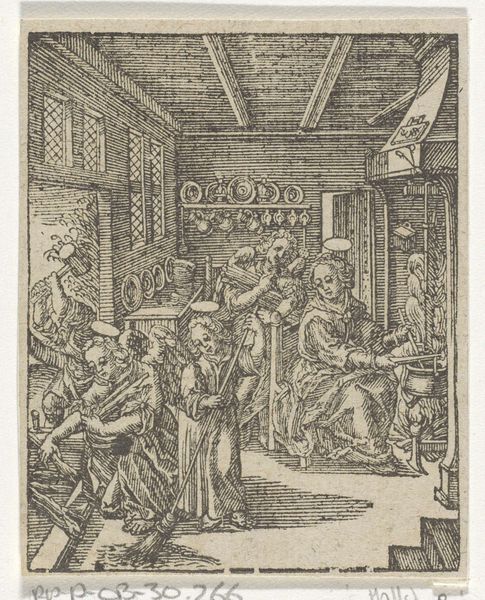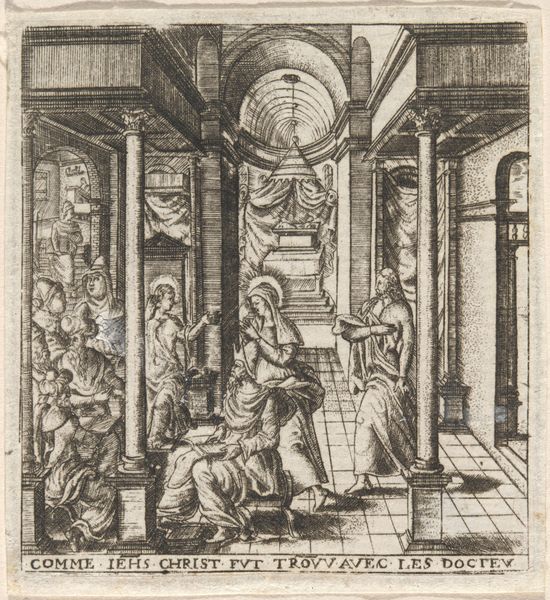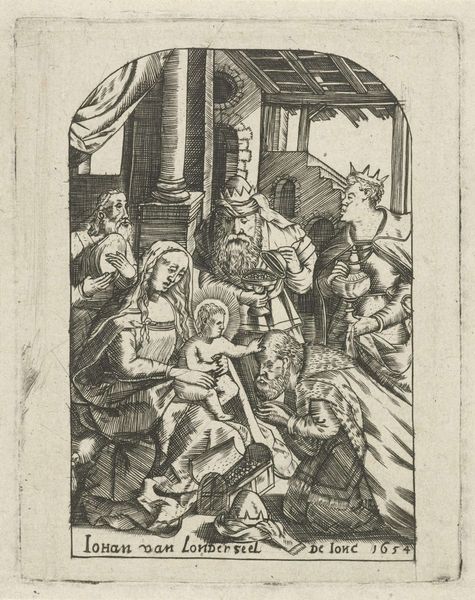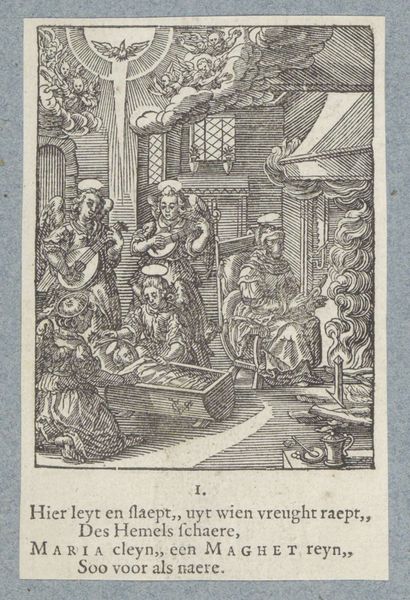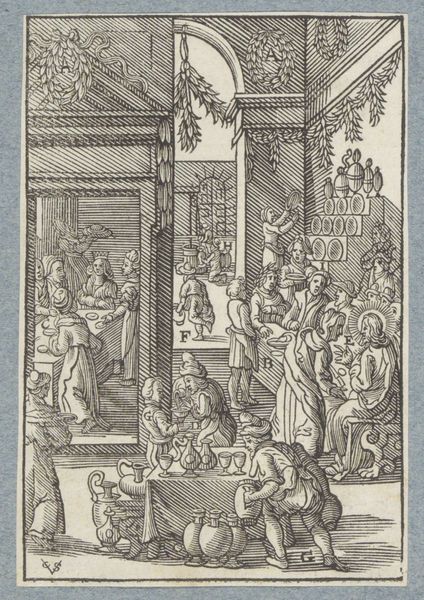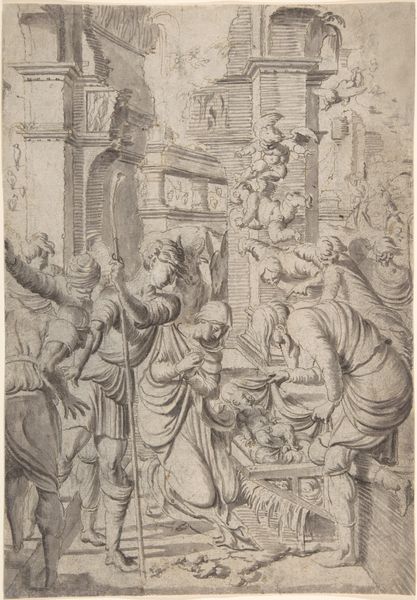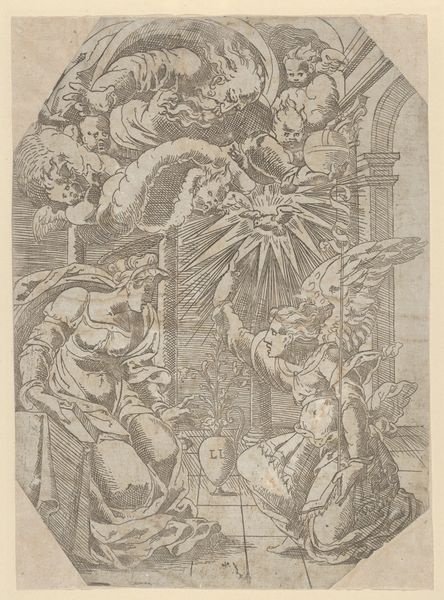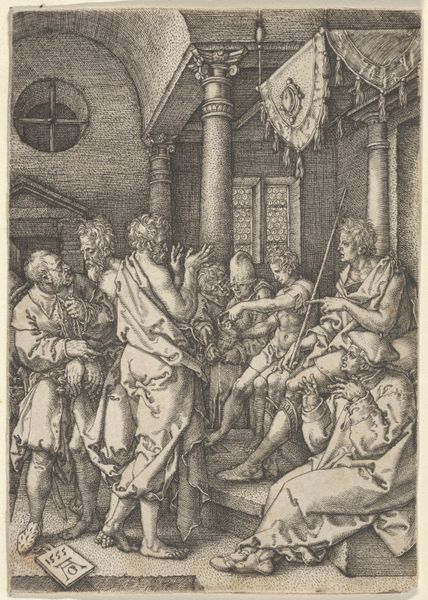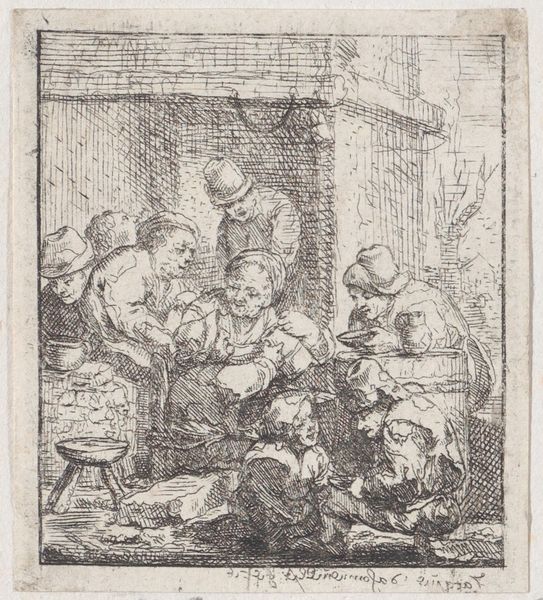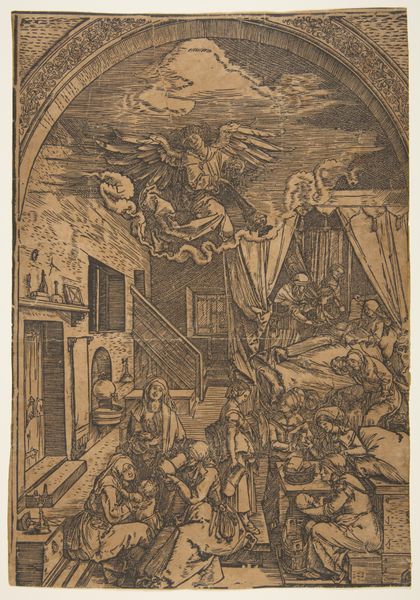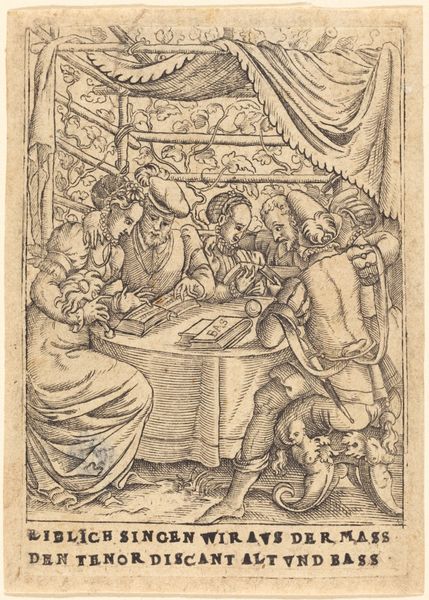
drawing, print, pen, engraving
#
drawing
#
pen drawing
# print
#
mannerism
#
figuration
#
pen
#
history-painting
#
engraving
Copyright: National Gallery of Art: CC0 1.0
Editor: This is "The Birth of John the Baptist," a print made in 1576 by Léonard Gaultier. It's incredibly detailed for a pen drawing and engraving. It depicts a busy scene indoors, and my first impression is how the artist manages to create such depth with such fine lines. What formal aspects stand out to you? Curator: Note how Gaultier uses hatching and cross-hatching to achieve tonal variations and give volume to the figures and objects. Observe also the architectural elements – the columns, arches, and tiled floor – which create a structured space. Do you see how the composition is divided into distinct areas of activity, yet remains unified through the consistent use of line and tone? Editor: I do, now that you mention it! The stark lines also make me wonder about the lack of color; how does that choice impact our viewing experience? Curator: The absence of color emphasizes the formal elements, highlighting the interplay of light and shadow created through the linework. Look at how the figures are rendered: elongated proportions and elegant poses, typical of Mannerist aesthetics, contributing to a sense of refined artificiality. Editor: It's interesting how the medium itself informs the style and, therefore, how we perceive the subject matter. So, if the composition is broken up into planes, what do you focus on first? Curator: Initially, my eye is drawn to the contrast between the intricate detail of the foreground figures and the receding architectural space. Editor: I never considered that Gaultier’s print was very deliberate about that contrast; I will certainly spend more time focusing on those stark choices moving forward. Thanks! Curator: A close analysis of the elements contributes significantly to appreciating the aesthetic intentions of the artist.
Comments
No comments
Be the first to comment and join the conversation on the ultimate creative platform.
